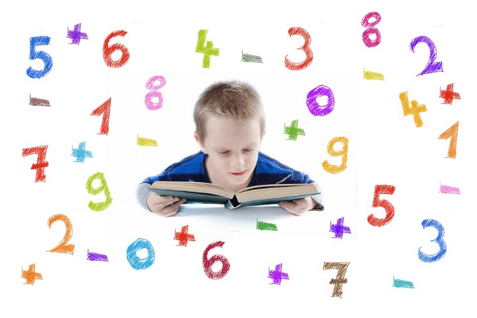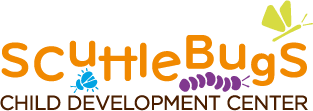What is Common Core?
Common Core is a set of standards that students are expected to learn in the subjects of English and Mathematics at the end of each grade in elementary and high school (K-12). It outlines the skills and knowledge that students in the public-school system must acquire by the end of each grade. It is not a curriculum but rather a set of standards with the individual state schools devising their own curriculum so that students can acquire those standards. The standards are uniform across all the states so students receive an equal education regardless of which state they live in or move to. It is designed to prepare students for college and also for their careers.
The English standards are organized into five categories – Reading – Writing – Speaking/Listening – Language – and Media/Technology. These are broken down further – for example - reading is sub divided into literature and informational texts. Each category and sub category has standards for each grade level. Math is also organized into categories. The standards are too lengthy to reproduce here in their entirety but one can have a very good flavor of what common core is all about by looking at the actual standards for Kindergarten level learners in reading as well as in mathematics.

- English Language Arts Standards
Reading Standards for Literature
|
Key Ideas and Details |
|
|
Kindergartners |
Grade 1 |
|
1.With prompting and support, ask and answer questions about key details in a text |
1.Ask and answer questions about key details in a text |
|
2. With prompting and support, retell familiar stories, including key details |
2. Retell stories, including key details, and demonstrate understanding of their central message or lesson |
|
3. With prompting and support, identify characters, settings, and major events in a story |
3. Describe characters, settings, and major events in a story, using key details |
|
Craft and Structure |
|
|
4. Ask and answer questions about unknown words in a text |
4. Identify words and phrases in stories or poems that suggest feelings or appeal to the senses. |
|
5. Recognize common types of texts (e.g., storybooks, poems). |
5. Explain major differences between books that tell stories and books that give information, drawing on a wide reading of a range of text types. |
|
6. With prompting and support, name the author and illustrator of a story and define the role of each in telling the story |
6. Identify who is telling the story at various points in a text. |
|
Integration of Knowledge and Ideas |
|
|
7. With prompting and support, describe the relationship between illustrations and the story in which they appear (e.g., what moment in a story an illustration depicts). |
7. Use illustrations and details in a story to describe its characters, setting, or events. |
|
8. (Not applicable to literature) |
8. (Not applicable to literature) |
|
9. With prompting and support, compare and contrast the adventures and experiences of characters in familiar stories |
9. Compare and contrast the adventures and experiences of characters in stories |
|
Range of Reading & Level of Text Complexity |
|
|
10. Actively engage in group reading activities with purpose and understanding. |
10. With prompting and support, read prose and poetry of appropriate complexity for grade 1. 10 |
Reading Standards for Informational Text
|
Key Ideas and Details |
|
|
Kindergartners |
Grade 1 |
|
1.With prompting and support, ask and answer questions about key details in a text. |
1.Ask and answer questions about key details in a text |
|
2. With prompting and support, identify the main topic and retell key details of a text. |
2. Identify the main topic and retell key details of a text. |
|
3. With prompting and support, describe the connection between two individuals, events, ideas, or pieces of information in a text |
3. Describe the connection between two individuals, events, ideas, or pieces of information in a text. |
|
Craft and Structure |
|
|
4. With prompting and support, ask and answer questions about unknown words in a text |
4. Ask and answer questions to help determine or clarify the meaning of words and phrases in a text. |
|
5. Identify the front cover, back cover, and title page of a book. |
5. Know and use various text features (e.g., headings, tables of contents, glossaries, electronic menus, icons) to locate key facts or information in a text. |
|
6. Name the author and illustrator of a text and define the role of each in presenting the ideas or information in a text. |
6. Distinguish between information provided by pictures or other illustrations and information provided by the words in a text. |
|
Integration of Knowledge and Ideas |
|
|
7. With prompting and support, describe the relationship between illustrations and the text in which they appear (e.g., what person, place, thing, or idea in the text an illustration depicts). |
7. Use the illustrations and details in a text to describe its key ideas. |
|
8. With prompting and support, identify the reasons an author gives to support points in a text. |
8. Identify the reasons an author gives to support points in a text. |
|
9. With prompting and support, identify basic similarities in and differences between two texts on the same topic (e.g., in illustrations, descriptions, or procedures). |
9. Identify basic similarities in and differences between two texts on the same topic (e.g., in illustrations, descriptions, or procedures). |
|
Range of Reading & Level of Text Complexity |
|
|
10. Actively engage in group reading activities with purpose and understanding. |
10. With prompting and support, read informational texts appropriately complex for grade 1. |
2. Mathematics Standards
Standards are set for mathematical practice as well as content. The 8 mathematical practices (standards) that students must acquire are…
- Make sense of problems and persevere in solving them.
- Reason abstractly and quantitatively.
- Construct viable arguments and critique the reasoning of others.
- Model with mathematics.
- Use appropriate tools strategically.
- Attend to precision.
- Look for and make use of structure.
- Look for and express regularity in repeated reasoning
Mathematical standards are determined at each grade level with six major categories to be covered in high school.
Number and Quantity
Algebra
Functions
Modeling
Geometry
Statistics and Probability
Mathematical Standards for Kindergarten
|
Counting and Cardinality |
|
Know number names and the count sequence |
|
1. Count to 100 by ones and by tens. |
|
2. Count forward beginning from a given number within the known sequence (instead of having to begin at 1). |
|
3. Write numbers from 0 to 20. Represent a number of objects with a written numeral 0-20 (with 0 representing a count of no objects). |
|
Count to tell the number of objects. |
|
4. Understand the relationship between numbers and quantities; connect counting to cardinality |
|
a. When counting objects, say the number names in the standard order, pairing each object with one and only one number name and each number name with one and only one object. |
|
b. Understand that the last number name said tells the number of objects counted. The number of objects is the same regardless of their arrangement or the order in which they were counted. |
|
c. Understand that each successive number name refers to a quantity that is one larger. |
|
5. Count to answer “how many?” questions about as many as 20 things arranged in a line, a rectangular array, or a circle, or as many as 10 things in a scattered configuration; given a number from 1–20, count out that many objects. |
|
Compare Numbers |
|
6. Identify whether the number of objects in one group is greater than, less than, or equal to the number of objects in another group, e.g., by using matching and counting strategies.1 |
|
7. Compare two numbers between 1 and 10 presented as written numerals. |
|
Operations and Algebraic Thinking |
|
Understand addition as putting together and adding to, and understand subtraction as taking apart and taking from. |
|
1. Represent addition and subtraction with objects, fingers, mental images, drawings2, sounds (e.g., claps), acting out situations, verbal explanations, expressions, or equations. |
|
2. Solve addition and subtraction word problems, and add and subtract within 10, e.g., by using objects or drawings to represent the problem |
|
3. Decompose numbers less than or equal to 10 into pairs in more than one way, e.g., by using objects or drawings, and record each decomposition by a drawing or equation (e.g., 5 = 2 + 3 and 5 = 4 + 1). |
|
4. For any number from 1 to 9, find the number that makes 10 when added to the given number, e.g., by using objects or drawings, and record the answer with a drawing or equation |
|
5. Fluently add and subtract within 5. |
|
Number and Operations in Base Ten |
|
Work with numbers 11–19 to gain foundations for place value. |
|
1. Compose and decompose numbers from 11 to 19 into ten ones and some further ones, e.g., by using objects or drawings, and record each composition or decomposition by a drawing or equation (e.g., 18 = 10 + 8); understand that these numbers are composed of ten ones and one, two, three, four, five, six, seven, eight, or nine ones. |
|
Measurement and Data |
|
Describe and compare measurable attributes. |
|
1. Describe measurable attributes of objects, such as length or weight. Describe several measurable attributes of a single object. |
|
2. Directly compare two objects with a measurable attribute in common, to see which object has “more of”/“less of” the attribute, and describe the difference. For example, directly compare the heights of two children and describe one child as taller/shorter. |
|
Classify objects and count the number of objects in each category. |
|
3. Classify objects into given categories; count the numbers of objects in each category and sort the categories by count. |
|
Geometry |
|
Identify and describe shapes (squares, circles, triangles, rectangles, hexagons, cubes, cones, cylinders, and spheres). |
|
1. Describe objects in the environment using names of shapes, and describe the relative positions of these objects using terms such as above, below, beside, in front of, behind, and next to. |
|
2. Correctly name shapes regardless of their orientations or overall size. |
|
3. Identify shapes as two-dimensional (lying in a plane, “flat”) or three dimensional (“solid”). |
|
Analyze, compare, create, and compose shapes. |
|
4. Analyze and compare two- and three-dimensional shapes, in different sizes and orientations, using informal language to describe their similarities, differences, parts (e.g., number of sides and vertices/“corners”) and other attributes (e.g., having sides of equal length). |
|
5. Model shapes in the world by building shapes from components (e.g., sticks and clay balls) and drawing shapes. |
|
6. Compose simple shapes to form larger shapes. For example, “Can you join these two triangles with full sides touching to make a rectangle?” |
(Source: http://www.corestandards.org/wp-content/uploads/Math_Standards1.pdf)
These are the standards in reading and mathematics that young learners must meet by the time they finish their Kindergarten year. The aim here has been to outline what the Common Core Standards are (and where to find further information on them) so that families graduating from Scuttlebugs know what to expect when entering Kindergarten. It is not to take a position on how successful the program has been. The yearly National Report Card and College readiness tests such as SAT and ACT will be the best judge of that. In the 3rd and final part next week, we will look at how Common Core has been implemented in California and what the test results are revealing about the success of the program.
Click here to continue reading about the Common Core Implementation in California.

References
National Association for the Education of Young Children (NAEYC). 2012. The Common Core
State Standards: Caution and Opportunity for Early Childhood Education. Washington,
DC: National Association for the Education of Young Children.
Snow, Kyle. “Variation in Children’s Experience of Kindergarten and The Common Core.” Common Core Issue Brief. November 2012. Washington, D.C. National Association for the Education of Young Children.
National Association for the Education of Young Children (NAEYC). 2015. Developmentally Appropriate Practice and the Common Core State Standards: Framing the Issues. Research brief. Washington, DC: NAEYC.
See Garland 2014; Lyndsay Layton, 2014, “How Bill Gates Pulled Off the Common Core Revolution,” Washington Post, June 7.
http://www.corestandards.org/wp-content/uploads/ELA_Standards1.pdf
http://www.corestandards.org/wp-content/uploads/Math_Standards1.pdf
